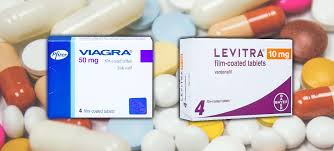
Antikoagulanti play a crucial role in the management of various health conditions. These medications help to prevent blood clots, ensuring a safer and smoother blood flow in patients. Understanding the mechanisms and applications of Antikoagulanti antikoagulanti is essential for anyone involved in healthcare or with an interest in medical treatments.
What are Antikoagulanti?
Antikoagulanti, or anticoagulants, are a class of drugs that reduce the formation of blood clots. They are vital in preventing thromboembolic events, which are serious conditions where blood clots form inappropriately in the veins or arteries. These medications are used in various clinical settings, including surgeries, heart disease, and atrial fibrillation, to minimize the risk of stroke and other complications resulting from blood clots.
Types of Antikoagulanti
There are several types of antikoagulanti, each with its own mechanism of action. The main categories include:
- Vitamin K Antagonists: Warfarin is the most well-known example. It works by inhibiting the action of vitamin K, which is necessary for the synthesis of several clotting factors in the liver.
- Direct Oral Anticoagulants (DOACs): This newer class includes drugs like rivaroxaban, apixaban, and dabigatran. They target specific clotting factors directly, providing a more predictable anticoagulant effect and requiring less monitoring than warfarin.
- Heparins: Unfractionated heparin and low molecular weight heparins (LMWH) are often used in hospitals for immediate anticoagulation. Heparins work by activating antithrombin III, which inhibits thrombin and factor Xa, thus preventing clot formation.
Mechanisms of Action

The effectiveness of antikoagulanti lies in their mechanisms. Vitamin K antagonists, such as warfarin, disrupt the vitamin K cycle, affecting clotting factors II, VII, IX, and X. This blocks the formation of these essential elements, leading to an overall reduction in clotting.
On the other hand, DOACs offer targeted inhibition of specific enzymes. For instance, rivaroxaban and apixaban inhibit factor Xa directly, while dabigatran inhibits thrombin. This precise action leads to fewer side effects and a lower risk of bleeding complications associated with outdated anticoagulants.
Indications for Use
Antikoagulanti are prescribed for various conditions, including:
- Atrial Fibrillation: Individuals with this condition are at higher risk for stroke due to potential blood clots forming in the heart.
- Deep Vein Thrombosis (DVT) and Pulmonary Embolism (PE): Antikoagulanti are vital in the management and prevention of these conditions, where blood clots can form in the leg veins and travel to the lungs.
- Post-operative care: After surgeries, especially orthopedic procedures, patients are often prescribed anticoagulants to prevent clot formation.
Benefits of Antikoagulanti
Antikoagulanti provide several benefits, including:
- Reduced risk of thromboembolic events: By managing blood coagulation, these medications significantly lower the chances of stroke and other serious complications.
- Improved patient outcomes: Effective management of conditions such as atrial fibrillation can lead to better quality of life for patients.
- Enhanced safety during surgeries: Proper anticoagulant management in perioperative settings protects patients from thrombotic complications.

Risks and Considerations
Despite their benefits, antikoagulanti come with inherent risks:
- Bleeding complications: The most significant risk associated with anticoagulant therapy is uncontrollable bleeding, which requires careful monitoring and dosage adjustments.
- Drug interactions: Antikoagulanti can interact with numerous medications, necessitating comprehensive medication reviews to avoid adverse effects.
- Patient compliance: Adherence to prescribed therapy is essential; missed doses can lead to increased thromboembolic risk.
Monitoring and Management
Monitoring patients on anticoagulants is crucial. For warfarin users, regular blood tests (INR tests) help ensure that the blood’s clotting ability remains within a safe range. For DOACs, routine monitoring is generally not required, although guidelines recommend periodic assessments of renal function, particularly in patients with comorbidities.
Conclusion
Antikoagulanti play a pivotal role in modern medicine, offering significant benefits in managing thromboembolic conditions while also carrying some risks. A clear understanding of their mechanisms, benefits, and challenges can improve patient outcomes and promote safe, effective therapy. As research progresses, the future of anticoagulant therapy looks promising with developments in newer, more pointed medications.
In summary, knowledge of antikoagulanti, their usage, and ongoing management is essential for both healthcare providers and patients alike, ensuring that the benefits far outweigh the risks in the quest for optimal health.